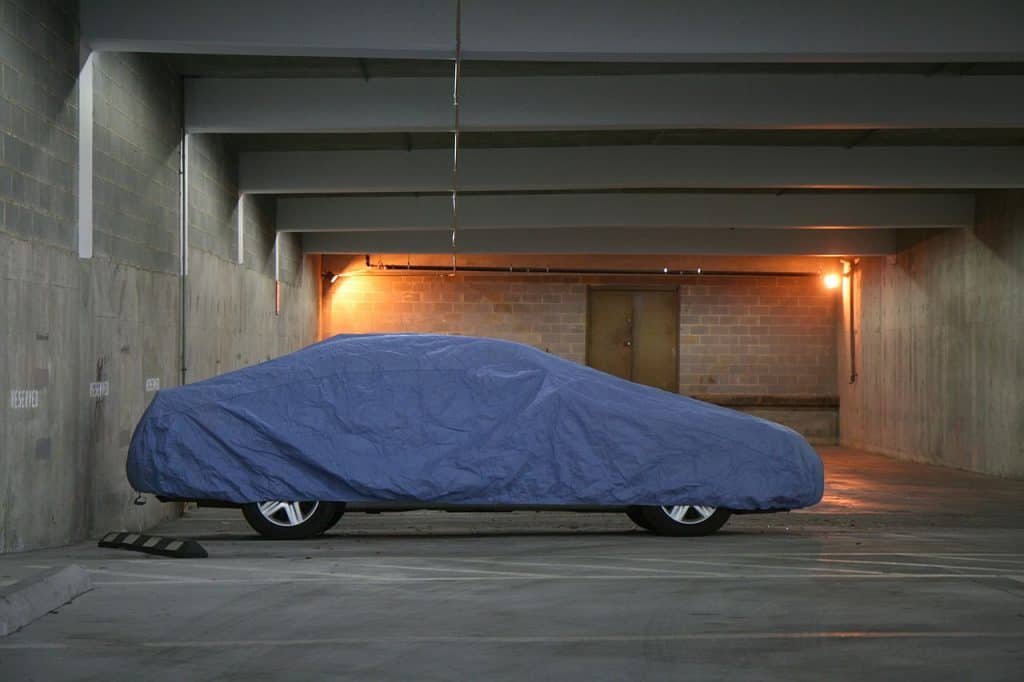Many people think of their car as one of their most prized possessions. Whether a Chevrolet or a Ferrari, you take great care of your vehicles any time of the year. However, you might have to leave your car behind for a while when going on a trip. So how do Safely Store Your Vehicle While Traveling without worrying about your accessories not getting stolen.
These nine tips will show you how to store your car properly while traveling.
Table Of Contents
Safely Store Your Vehicle While Traveling
1. Determine Where You’ll Store It

The first step in properly storing your vehicle is finding a place to leave it while you’re gone. A garage is one of the best places because you can lock up your car and protect it from the elements. Ultraviolet (UV) rays, snow, and sun can take a toll on your ride’s exterior, so keeping it inside is typically the best solution.
You could take your car to a storage facility if you don’t have a garage. For a fee, you can keep your vehicle locked up in a climate-controlled environment where it will stay safe. Reputable storage facilities will have secure stalls to protect your vehicle from thieves and pests.
2. Change the Oil
Once you’ve determined your method for storage, you should consider upkeep requirements. One of the first things to do is change the oil. Doing this can help protect your vehicle if you’ll be away for a while because oil can harm your engine if it sits idle. It can take a toll on gaskets and affect your car’s performance.
Check the oil before you take the car for a drive after returning from your trip. Consider using synthetic oil to extend the life of your engine. This lubricant made from chemical compounds holds up well in hot and cold conditions, so it’ll be one less thing to worry about while you’re gone.
3. Fill the Gas Tank
Another way to be proactive when storing your car is by filling up the gas tank, preventing moisture buildup. This measure also ensures you’ll have enough fuel in the car when you return from your trip and are ready to drive again.
Another factor to consider is the shelf life of the gas in your car. Untreated gasoline lasts between three and six months. After about three months, the gas will start to deteriorate because of oxidation. One way to mitigate this problem is with a fuel stabilizer. This product will neutralize chemical reactions and prevent evaporation in the fuel tank.
4. Change Fluids
Your oil and gasoline are two essential liquids in your car, but there are other fluids you should monitor before leaving your vehicle in a garage. For example, bleeding the brakes is vital before storage. This process entails removing air bubbles from your brake system. You don’t want air entering your lines because it harms the brakes and makes them less efficient. You need hydraulic pressure and air bubbles can damage the entire system.
You should also change the fluids for the transmission, power steering, and antifreeze. These measures will help deter corrosion from acids and other possible contaminants. It may be best to drain and refill these fluids if you haven’t changed them in a while.
5. Charge the Battery

Your vehicle’s battery is one of the most critical parts to prep while you’re gone. The battery will drain fast if it has a low charge and you live in a cold climate. When you return from your trip, you could find yourself with a dead battery and a car that won’t start.
If you can, have a trusted friend or a family member start your vehicle and drive it around once every couple of weeks. Starting the car ensures your car runs smoothly and all parts are sufficiently lubricated and up to standards.
If you can’t find anybody to start your vehicle for you, you should remove the battery terminals before you leave. This method will keep the battery’s charge and give you peace of mind. You could also hook your car to a battery maintainer to maintain the charge while it sits idle.
6. Put Air in the Tires
The tire pressure will decrease when cars sit for a long time. Once the pounds per square inch (PSI) dips low, your vehicle risks flat spots because the weight of your car pushes down on the tires. Low temperatures can flatten them even faster if you leave your vehicle outside or in a cold facility.
Asking a trusted friend to drive the car can help bring the tire pressure up. Before you leave, check the PSI in your wheels and fill them up. If anything, overinflating is a way to be proactive because if your tires lose pressure, they’ll still be at an acceptable level when you return.
7. Elevate the Vehicle
Consider elevating the vehicle and putting it on jack stands if you don’t have anybody to start your car. The vehicle’s weight takes a toll on your tires and can cause flat spotting, and one way to mitigate that is by raising it off the ground.
There are a few ways you can go about this process. You could use cement blocks, ramps or a hydraulic lift, but jack stands are likely your best bet. If you choose this method, park your car on level ground and chock the wheels to keep it still. Lift the vehicle using the jack and support it using jack stands. The stands are adjustable, so the height is up to your preference.
8. Protect From Animals
Another benefit of elevating your car is that it can help prevent unwanted critters from messing with your vehicle. Mice, rats, and other pests enter garages and storage facilities because they want a dry and warm place to stay. Unfortunately for you, your vehicle is a prime target for them, and there are a lot of wires and other things they can chew on.
You can take other measures besides elevation to prevent animals from infiltrating. The first step would be to cover any points of entry for the pests. These holes could be the exhaust pipe, steering columns, or tailpipe. You could also put items like mothballs or mousetraps around the vehicle. Peppermint seems to be a good deterrent for mice, so you could put some essential oil on cotton balls and spread them around the car.
9. Use Security Cameras
Car theft has declined considerably in the last 30 years but has started to creep up again. In 2020, the number of stolen vehicles increased by almost 12% compared to 2019 and is at its highest rate since 2009. Getting security cameras will help protect your car if you plan to leave it for a few weeks or a month at a time.
Storage facilities have cameras that will monitor your car for you. However, surveillance technology would be an excellent investment if you’re keeping your vehicle at home. You can get cameras that you can watch from your phone. While you’re gone, you can monitor your car and check for any suspicious activity.
Finally, Storing Your Car With No Worries
You could be gone for days, weeks, or even months when traveling. Before you leave, you should ensure your car has everything it needs to stay in tip-top shape. Implement these tips for storing your vehicle while you travel so you can hit the road when you return with no worries.








